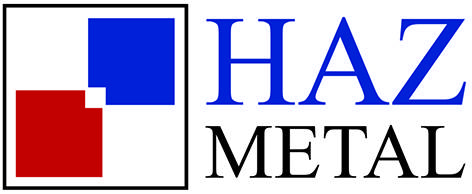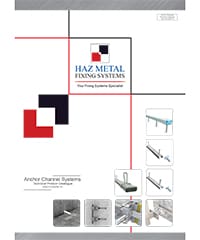
Cast-in Anchor Channel
- No drilling on site
- Quick and easy fixing
- Fixing without damaging concrete
- Adjustable and flexible
- Safe near edges on concrete,
- High load capacity
- Fixing without electrical
- Safe and secure fixing
- No dust particles falling onto the facade
- Easy connections with T bolts and lock nuts
- Compensation for tolerances of the structure
- Fixtures are removable and tools
HMPR-CE Cast-in Anchor Channels are rolled channels with swaged studs that are cast into concrete structures. This system method provides easy and safe fixations to structures such as concrete slabs.
The anchor channels are supplied with a filler strip within the channel slot, which prevents concrete ingress during casting. After the concrete is dried, the fillers are removed from the channels, leaving an open slot on the wall for fixture connections.
Apart from the standard range of anchor channels, bespoke design and manufacturing of anchor channels are done for areas where standard types cannot be used.
Special cast-in channels are preferred for areas where there are limitations, such as complex corner applications, low slab thicknesses, reduced edge spaces and higher design loads.
HTB T Head Bolts and Lock Nuts are available to allow secure and easy connections to the anchor channels. The use of this system is applicable in a wide range of construction works.
Channel profiles available for casting are :28/15, 38/17, 40/22, 40/25, 41/22, 49/30, 50/30, 52/34, 54/33, 72/49
Features of HMPR-CE Anchor Channels
- HMPR-CE Cast - in Channels are designed in accordance with the design rules according to CEN / TS 1992-4-3.
- HMPR-CE Anchor channels allow users to work with low edge distances.
- Load resistances can be improved with a higher concrete strength class on loading in shear.
- The shear and tension resistance of concrete can be improved with additional reinforcements.
![]() ETA -17/0549 & DIBT Z-21.4-2038
ETA -17/0549 & DIBT Z-21.4-2038
The European Technical Approval ETA- 13/0399 for the HMPR-CE Anchor Channels was issued by the Deutsches Institut für Bautechnik (DIBt) in 2013.
This new approval is valid in all states of Europe. An ETA catalogue is available which includes the dimensioning of the anchor channels in accordance with the new European standards series CEN/TS 1992-4-3 "Design of fastenings for use in concrete - Anchor Channels."
Application examples for Cast-in Anchor Channels
Anchor Channels are widely used for the installation of curtain walls. Unitized panels with materials such as glass and natural stone already incorporated are preassembled into the curtain wall panels. These panels are erected to the building elevation and are quickly and easily fixed onto the anchor channels using T-head bolts and special brackets.
Brick walls are installed using special support brackets that are fixed onto the anchor channels using T Head Bolts. A continuous anchor channel embedded into the concrete wall provides high adjustability and enables quick installation of the masonry brackets. Cast-in Channels cover the load capacity requirements for the brickwork installation.
Cast-in Anchor channels are used for a variety of construction applications that require attachments made onto concrete. Pipe and duct installation of electrical wiring are the most common applications that are made using anchor channels.
The prefabricated concrete industry is among the fastest-growing fields within the construction industry. The use of anchor channels enhances the fast and economical solutions that are offered using prefabricated concrete panels. Speed and security are the benefits of using anchor channels.





